International Steel Prices
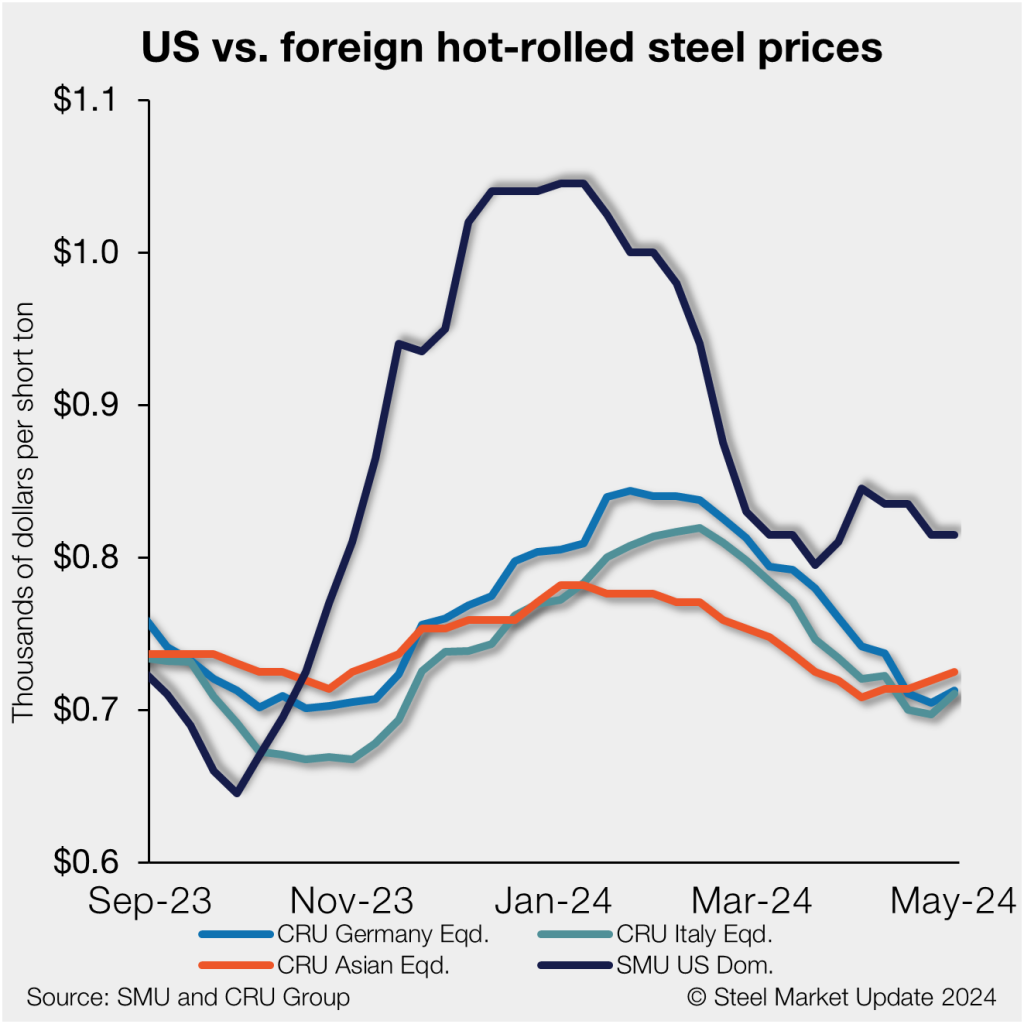
US HR premium over imports tightens further
Written by David Schollaert
May 2, 2024
US hot-rolled (HR) coil price premium over offshore hot band has tightened on the back of lower domestic tags, though stateside HR coil remains markedly more expensive than imports.
Domestic HR coil prices are now 12.1% more expensive than imports. The premium is down from 13.3% last week, and down from a 10-week high of 15.2% in mid-April.
Recall that the premium US product had over imports for roughly five months – that swelled to a two-year high of $281 per short ton (st) on average – nearly vanished in March. But with US tags edging down and showing a bit more stability in April, domestic prices have slowly lost their premium over imports.
In dollar-per-ton terms, US HR coil is now, on average, $99/st more expensive than offshore product (Figure 1), $9 lower week on week (w/w) on average, and moving closer to a recent low premium of $40/st in early March.
This week, domestic HR coil tags were unchanged w/w at $815/st on average based on SMU’s latest check of the market on Tuesday, April 30.
The charts below compare all four price indices. The right side highlights the difference in more recent pricing.
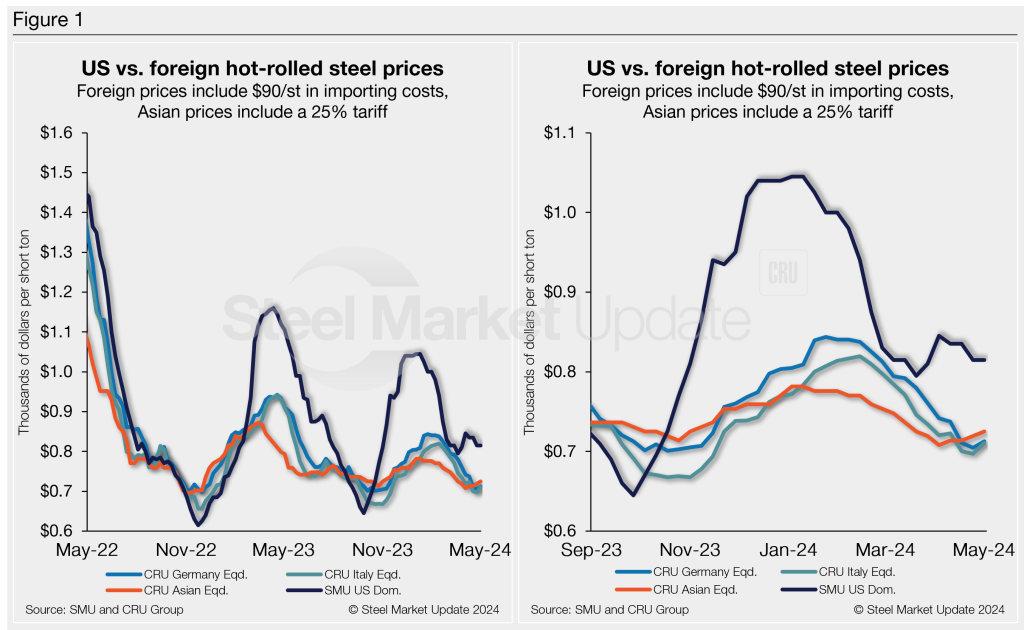
Methodology
This is how SMU calculates the theoretical spread between domestic HR coil prices (FOB domestic mills) and foreign HR coil prices (delivered to US ports): We compare SMU’s US HR coil weekly index to the CRU HR coil weekly indices for Germany, Italy, and East and Southeast Asian ports. This is only a theoretical calculation. Import costs can vary greatly, influencing the true market spread.
We add $90/st to all foreign prices as a rough means of accounting for freight costs, handling, and trader margin. This gives us an approximate CIF US ports price to compare to the SMU domestic HR coil price. Buyers should use our $90/st figure as a benchmark and adjust up or down based on their own shipping and handling costs. If you import steel and want to share your thoughts on these costs, please get in touch with the author at david@steelmarketupdate.com.
Asian HRC (East and Southeast Asian ports)
As of Thursday, May 1, the CRU Asian HRC price was $508/st, up $5/st vs. the prior week. Adding a 25% tariff and $90/st in estimated import costs, the delivered price of Asian HRC to the US is approximately $725/st. The latest SMU hot rolled average for domestic material is $815/st.
The result: US-produced HRC is theoretically $90/st more expensive than steel imported from Asia. The spread is down $6/st vs. last week, and now $191/st from its seven-month high of $281/st in late December.
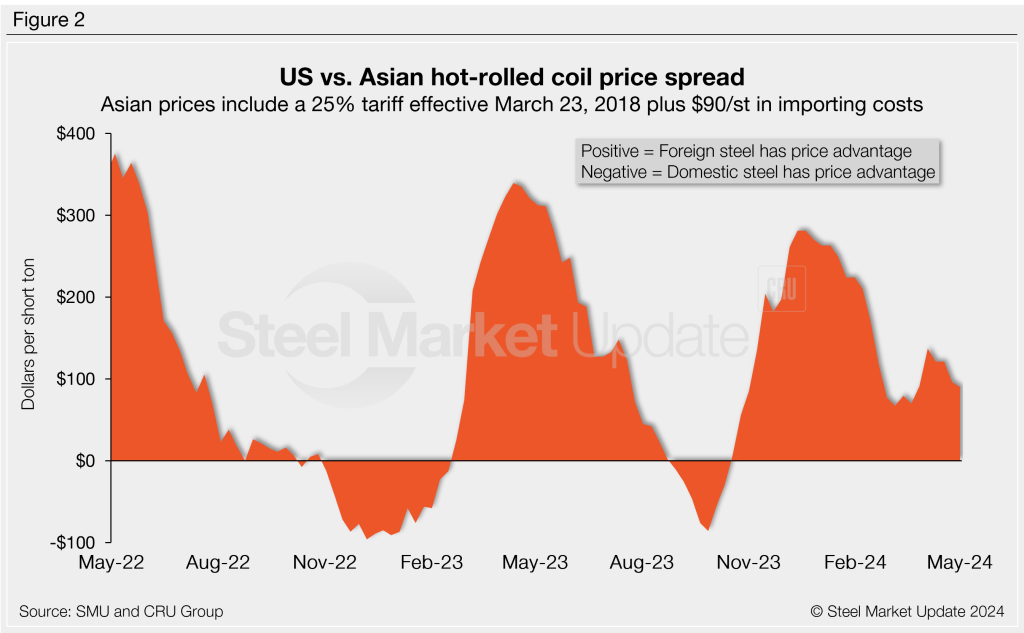
Italian HRC
Italian HR coil prices were up $14/st to roughly $621/st this week. Italian prices are still just $43/st removed from a recent bottom of $577/st last October. After adding import costs, the delivered price of Italian HR coil is in theory $711/st.
That means domestic HR coil is theoretically about $104/st more expensive than HR coil imported from Italy. The spread is down $14/st last week. The domestic hot band price premium over offshore product from Italy is now down $193/st from a recent high of $297/st in mid-December.
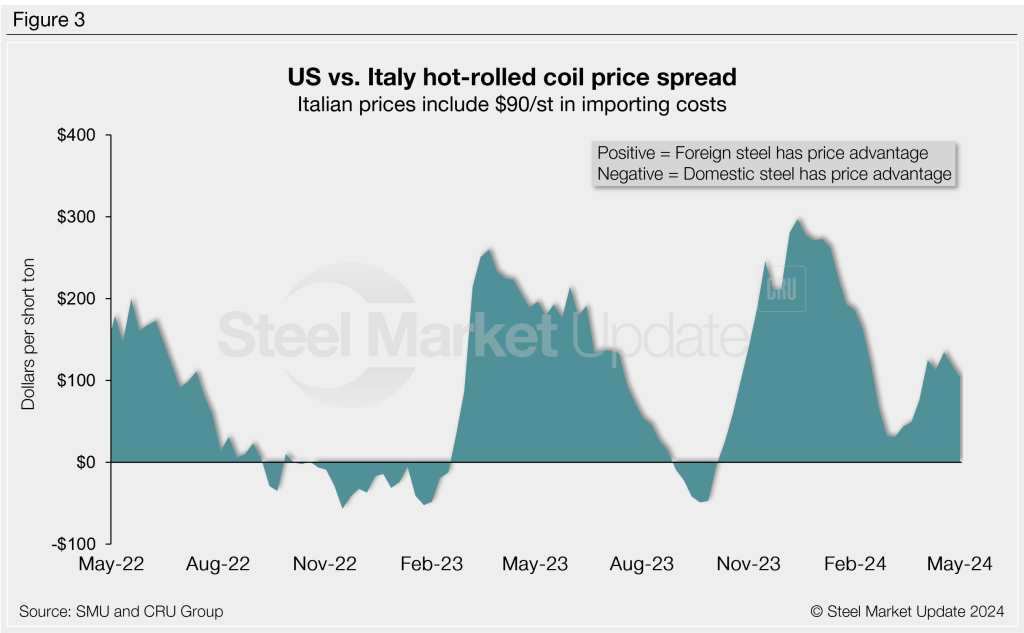
German HRC
CRU’s German HR coil price ticked up $8/st from the week before to $623/st. After adding import costs, the delivered price of German HR coil is in theory $713/st.
The result: Domestic HR coil is theoretically $102/st more expensive than HR coil imported from Germany. The spread is down $8/st w/w and now $163/st away from 2023’s widest spread of $265/st.
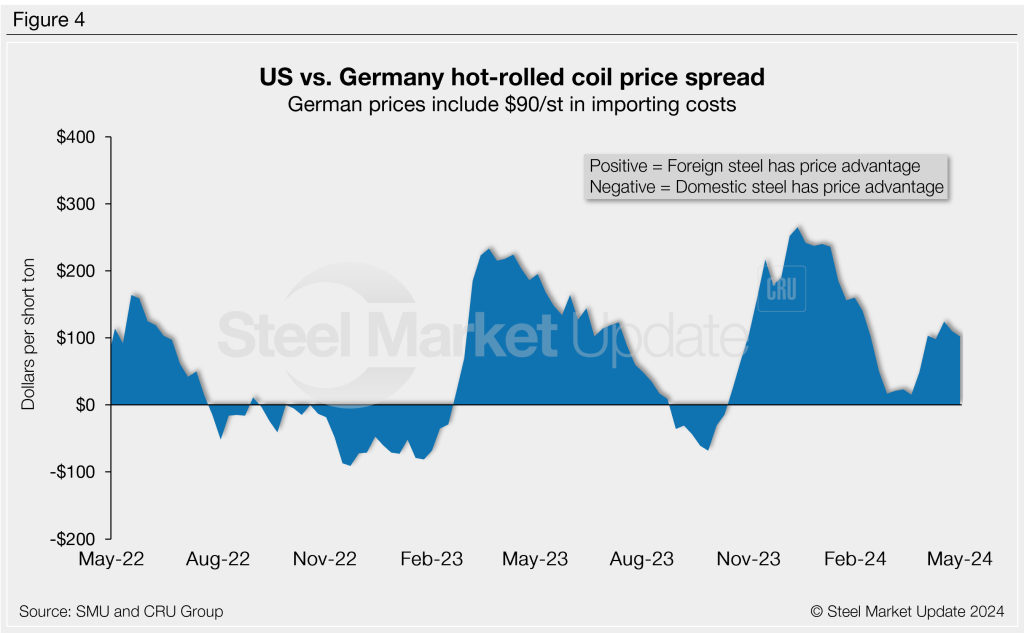
Notes: Freight is important in deciding whether to import foreign steel or buy from a domestic mill. Domestic prices are referenced as FOB the producing mill, while foreign prices are CIF the port (Houston, NOLA, Savannah, Los Angeles, Camden, etc.). Inland freight, from either a domestic mill or from the port, can dramatically impact the competitiveness of both domestic and foreign steel. It’s also important to factor in lead times. In most markets, domestic steel will deliver more quickly than foreign steel.
Effective Jan. 1, 2022, Section 232 tariffs no longer apply to most imports from the European Union. It has been replaced by a tariff rate quota (TRQ). Therefore, the German and Italian price comparisons in this analysis no longer include a 25% tariff. SMU still includes the 25% Section 232 tariff on prices from other countries. We do not include any antidumping (AD) or countervailing duties (CVD) in this analysis.

David Schollaert
Read more from David SchollaertLatest in International Steel Prices

US and offshore HRC prices tick lower
The threat of tariffs over the past two months has been a springboard for US prices. But the Section 232 reinstatement on March 13 narrowed the domestic premium over imports on a landed basis.

Domestic CRC prices surge ahead of imports
The price spread between stateside-produced CR and imports reached its widest margin in over a year.

US HR prices rising faster than offshore tags
Hot-rolled (HR) coil prices continued to rally in the US this week, quickly outpacing price gains seen abroad. The result: US hot band prices have grown widely more expensive than imports on a landed basis. The premium US HR tags carry over HR prices abroad now stands at a 14-month high. SMU’s average domestic HR […]

US HR price premium over imports widens
Hot-rolled (HR) coil prices were flat in the US this week, while tags in offshore markets were mostly down.

US HR price premium over imports edges up
The price premium between stateside hot band and landed imports widened slightly this week.
